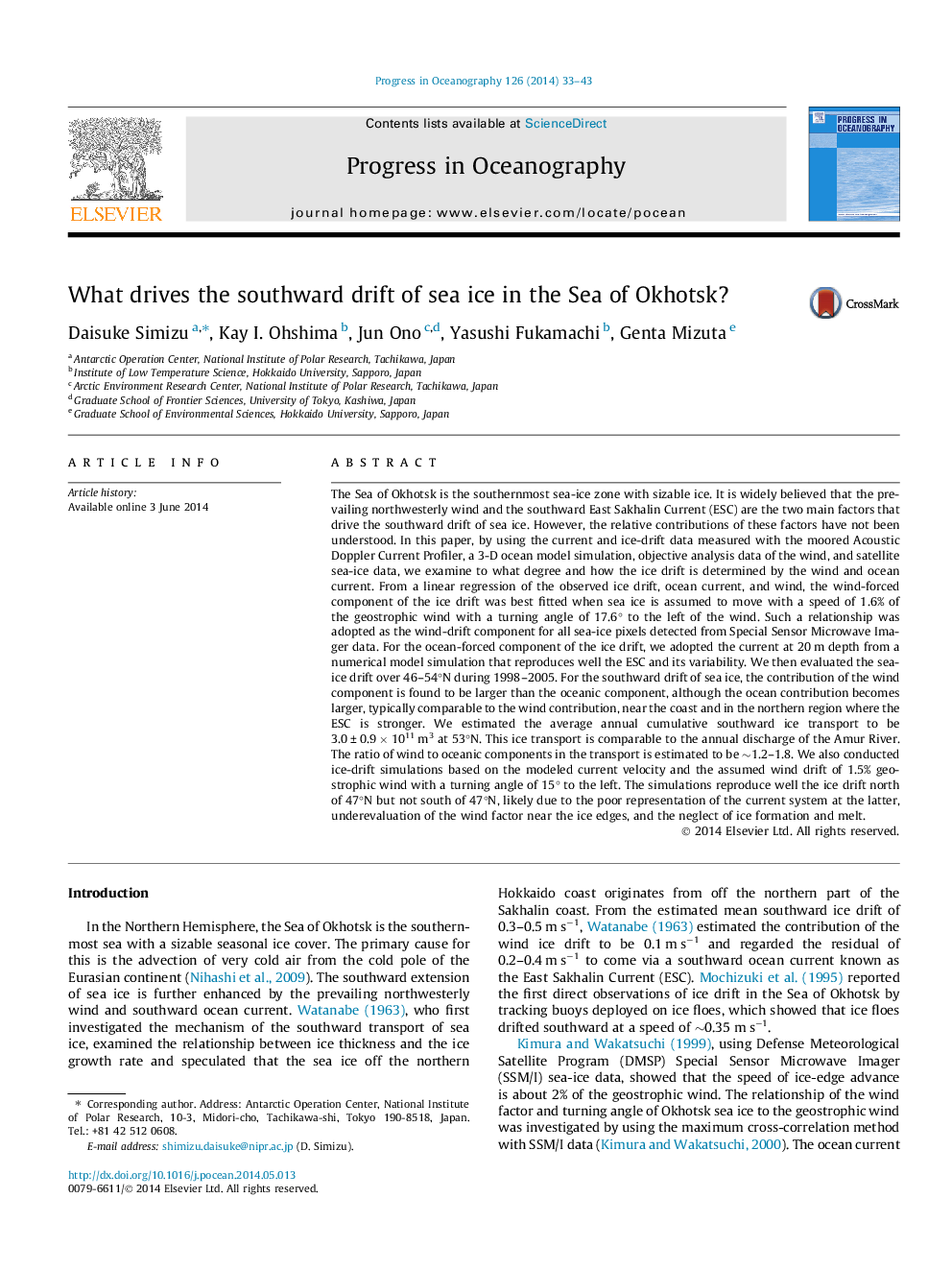| کد مقاله | کد نشریه | سال انتشار | مقاله انگلیسی | نسخه تمام متن |
|---|---|---|---|---|
| 4553092 | 1627929 | 2014 | 11 صفحه PDF | دانلود رایگان |
عنوان انگلیسی مقاله ISI
What drives the southward drift of sea ice in the Sea of Okhotsk?
ترجمه فارسی عنوان
ریزش یخ دریا در دریای اوکوتسک رانندگی می کند؟
دانلود مقاله + سفارش ترجمه
دانلود مقاله ISI انگلیسی
رایگان برای ایرانیان
موضوعات مرتبط
مهندسی و علوم پایه
علوم زمین و سیارات
زمین شناسی
چکیده انگلیسی
The Sea of Okhotsk is the southernmost sea-ice zone with sizable ice. It is widely believed that the prevailing northwesterly wind and the southward East Sakhalin Current (ESC) are the two main factors that drive the southward drift of sea ice. However, the relative contributions of these factors have not been understood. In this paper, by using the current and ice-drift data measured with the moored Acoustic Doppler Current Profiler, a 3-D ocean model simulation, objective analysis data of the wind, and satellite sea-ice data, we examine to what degree and how the ice drift is determined by the wind and ocean current. From a linear regression of the observed ice drift, ocean current, and wind, the wind-forced component of the ice drift was best fitted when sea ice is assumed to move with a speed of 1.6% of the geostrophic wind with a turning angle of 17.6° to the left of the wind. Such a relationship was adopted as the wind-drift component for all sea-ice pixels detected from Special Sensor Microwave Imager data. For the ocean-forced component of the ice drift, we adopted the current at 20 m depth from a numerical model simulation that reproduces well the ESC and its variability. We then evaluated the sea-ice drift over 46-54°N during 1998-2005. For the southward drift of sea ice, the contribution of the wind component is found to be larger than the oceanic component, although the ocean contribution becomes larger, typically comparable to the wind contribution, near the coast and in the northern region where the ESC is stronger. We estimated the average annual cumulative southward ice transport to be 3.0 ± 0.9 Ã 1011 m3 at 53°N. This ice transport is comparable to the annual discharge of the Amur River. The ratio of wind to oceanic components in the transport is estimated to be â¼1.2-1.8. We also conducted ice-drift simulations based on the modeled current velocity and the assumed wind drift of 1.5% geostrophic wind with a turning angle of 15° to the left. The simulations reproduce well the ice drift north of 47°N but not south of 47°N, likely due to the poor representation of the current system at the latter, underevaluation of the wind factor near the ice edges, and the neglect of ice formation and melt.
ناشر
Database: Elsevier - ScienceDirect (ساینس دایرکت)
Journal: Progress in Oceanography - Volume 126, August 2014, Pages 33-43
Journal: Progress in Oceanography - Volume 126, August 2014, Pages 33-43
نویسندگان
Daisuke Simizu, Kay I. Ohshima, Jun Ono, Yasushi Fukamachi, Genta Mizuta,
